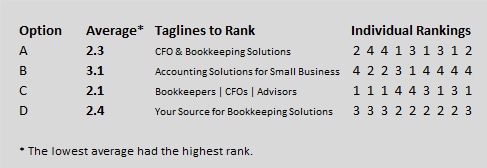
Just as wise decisions can make a business, poor decisions can break it. Unfortunately, many business owners commit financial resources without properly compiling and analyzing information. There are many decision-making tools available. To keep things simple, consider a tool to qualify the decision (a decision matrix) and a tool to quantify (a cost-benefit analysis). We’ll discuss performing a cost benefit analysis in a future article but a decision matrix can assist with all types of decisions: from hiring an additional employee, adding locations, or deciding whether to lease or purchase capital equipment.
Decision matrix
A decision matrix narrows options and reveals the most important criteria for making a choice by evaluating alternatives for a course of action. It [ideally] takes out subjectivity and focuses on objective factors. Obviously the factors will be specific to the decision, but the key is to weight the benefits and drawbacks of the choice at hand.
How to use a decision matrix
- Begin by making a chart with a row for each alternative, and a column for each factor that affects the decision. Examples of factors include cost, effectiveness, ease of integration with current systems, and ability to meet long-term needs.
- Establish a rating scale, such as from 1 to 5 (5 being the highest rating), to evaluate the ranking of how each factor performs for the specific alternative.
- Rank the ‘weight’ of the factor. For example, gaining efficiency may be twice as important as cost. So the ‘weight’ column gives efficiency a ‘2’ and cost a ‘1.’
- Multiply the rating by the weight to get the weighted score.
- Evaluate the scores to make the decision.
Once a decision or direction is evident from the development of a decision matrix, the next step may be to quantify the affordability/financial impacts of the decision by using a cost-benefit analysis.
Here is an example of a decision matrix Lucrum used to evaluate a new logo / tagline combination. We conducted a survey and compiled the results. We had already decided to update our logo but were having trouble deciding which option was the best. Note that in this example we assigned the same weight to each respondent.
So the next time a difficult decision is at hand, consider a decision matrix. It can be simple as a two column chart listing pros and cons or as complex as a multi-option ranking system with a specific weight given to each criteria.

I’m On QuickBooks Desktop Pro or Premier…Should I Migrate to QuickBooks Online or Upgrade to QuickBooks Enterprise?
by Debbi Silva If you’re on QuickBooks Desktop Pro or Premier, you’ve likely already heard about Intuit’s plan to phase out the …

Cash Flow Forecasting 101 (and Tips for Organizations Using QuickBooks)
By: Jeff Heybruck Forecasting cash flow is one of the most difficult but impactful planning exercises a business owner can undertake. There …

Small Business Tips to Negotiate Better Payment Terms & Conditions with Customers
By: Jeff Heybruck Net 30? Yeah, right. AR from large clients can be tricky. A common refrain we hear from small business …

